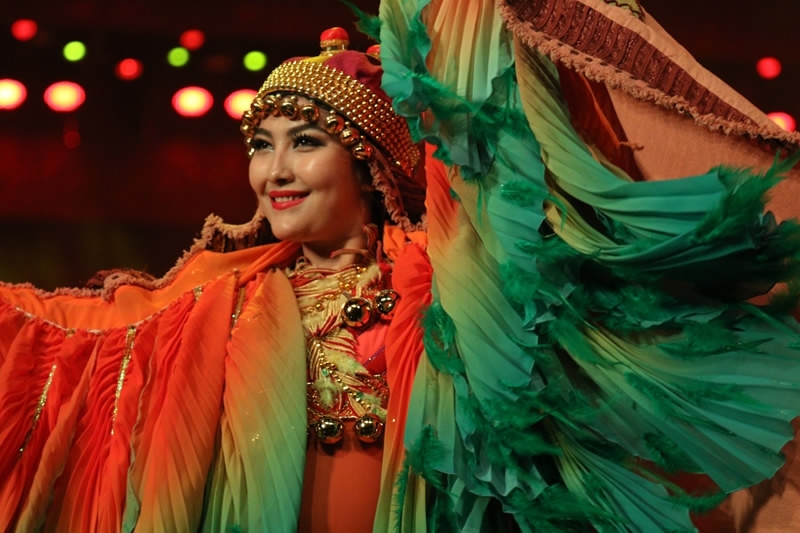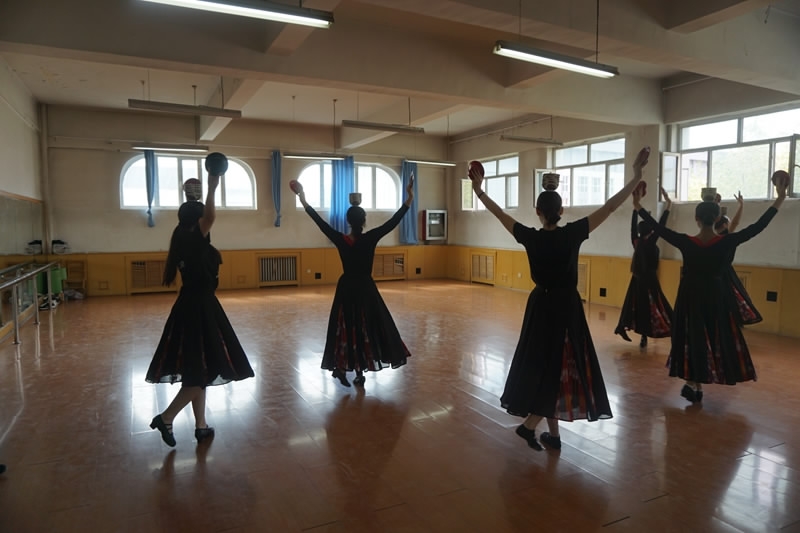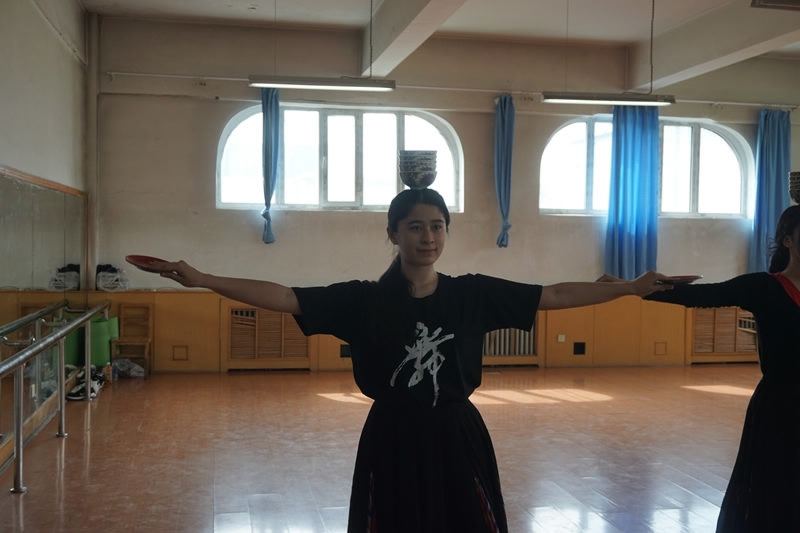By CGTN's Grace Shao
Three hundred and sixty people. 2000 costumes. 3600 square meter LED screen. This 271 million USD production is one of world’s largest folk dance productions. Back To The Silk Road, showcasing the culture and two-thousand-year civilization along the ancient Silk Road.

Back to the Silk Road Performance at Xinjiang Grand Theatre./CGTN Photo
The artists use their bodies to tell stories about the merchants on camels who travel through the desert and mountains. When stopped by a sudden avalanche the merchants are welcomed into the homes of the Tajik minorities. The show exhibits the multicultural facets of China’s western region. Taking the audience on a mystical journey through the ice-capped mountains, deserts, prairies and grasslands.

Back to the Silk Road Performance in Urumqi/CGTN Photo
The performers are from a wide range of Chinese ethnic groups, from Han to Uygur to Kazakh to Tajik. The show includes folk dancing as well as acrobatics, ballet, ice-skating, high technology and even horse show. The performance is an extravagant exhibition of the rich culture and a perfect blend of modernity and traditions, in northwest China's Xinjiang Uygur Autonomous Region.

Back to the Silk Road Performance in Urumqi/CGTN Photo
Although the Uyghurs, Kazaks, and other ethnic minority groups in the region are known for their artistic prowess, their skills and techniques did not come without hard work. There is a Chinese saying: “台上一分钟台下十年功” which translates as “one minute onstage is from ten years of practice off stage.” Most of these performers have been with the dance troupe since university graduation and have been dancing since the age of three or four. A vigorous training schedule involving practice six days a week including three days of performance all year round, these young dancers are some of the best in Urumqi, capital of the autonomous region.
With singing and dancing part of the local culture, students can choose to study ethnic folk dance even in high school and use it for extracurricular credit for their university entrance.

High school students practicing at No. 6 High School in Urumqi/CGTN Photo
Aysultan is a grade twelve student, who has already been accepted to several of the country's top universities. She hopes to move to Shanghai in east China to major in Japanese-Chinese translation and minor in ethnic dance. She says that dancing has been a huge part of her upbringing and she loves it but it is not all she can do. She added: “Us Uygur are naturally passionate and warm people and we love to sing and dance but we have other talents too.”
The ambitious girl has also received scholarship offers for her competence in playing the violin. She says the girls must practice at least two hours a day on top of an intense grueling high school curriculum that is prepping them for the national university entrance examination, “gao kao”.

Aysultan, grade twelve student at Urumuqi’s No.6 High School/CGTN Photo
Meanwhile at the Xinjiang Arts Theatre, young performers practice daily. The Xinjiang Arts Theatre was founded in 1949, and is home to over 800 members of staff. While four of the troupes are based in Urumqi, three are scattered around the autonomous region. Artists perform a range of talents, from instruments to dance to musicals. Their hard work is shown off during tours around the country and the world.

Xinjiang Arts Theatre Dance Troupe Practicing/CGTN Photo
“Meshrep” which means a celebration or party in the Uygur language comes in more than 30 forms, the head of the troupe, Anwar Samat says. Some are to celebrate life, some to show an apology, some as a lesson to younger generations, he said.
He added: “This is not just a cultural practice but for our people. Dancing and singing teach our children how to be a good man. They go to school for academic knowledge but cultural activities are just as important. It is our way to preserve our cultural traditions.”

Lu Yue performing traditional Uygur dance/CGTN Photo
As for the only Han ethnic dancer in the troupe, Lu Yue says as a Xinjiang native, learning about her friends and neighbors' culture should be normal. Her mother put her in folk dance classes at a young age and she fell in love with dancing. Upon graduation from university it only seemed right to come back to Xinjiang to dance with her brothers and sisters and promote their heritage and Xinjiang’s diversity.









